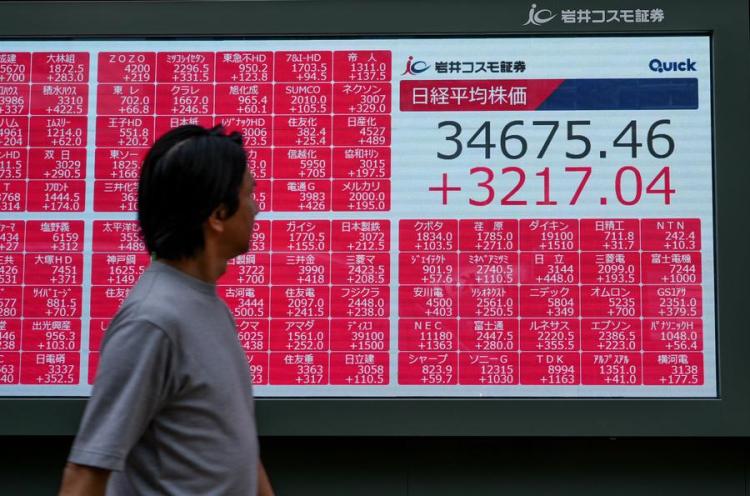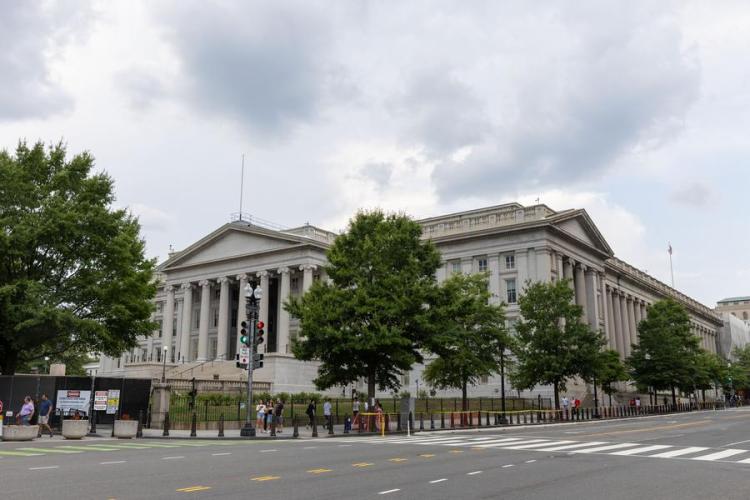China continues to serve as a stabilizing force in the world economy, despite the complexities of international dynamics.

Tourists taste craft beer during the 5th Tianjin Nighttime Life Festival in north China's Tianjin Municipality, Aug. 2, 2024. (Xinhua/Zhao Zishuo)
BEIJING, Aug. 23 (Xinhua) -- The global economy in the first half of this year has experienced modest growth and a sluggish recovery, with prospects remaining uncertain. Yet, China's growth, buoyed by a rebound in domestic consumption and strong export performance, has provided a much-needed boost to global economic momentum.
The International Monetary Fund (IMF)'s July edition of the World Economic Outlook (WEO) forecasts global growth to remain stable at 3.2 percent in 2024 and 3.3 percent in 2025, yet warns that near-term risks have gained prominence, particularly upside risks to inflation, as services inflation remains high and geopolitical tensions continue.
In an increasingly turbulent and imbalanced global environment, China's economy has continued its upward trajectory, registering a 5-percent growth in the first half of 2024. By fostering new quality productive forces and promoting high-quality development, China remains the main engine for the global economy.

A pedestrian passes a screen showing stock market information in Tokyo, Japan, Aug. 6, 2024. (Xinhua/Yue Chenxing)
IMBALANCES
"The Global Economy in a Sticky Spot" reads the subtitle of the July edition of the WEO.
Despite a slow overall recovery in the first half of 2024, global economic imbalances continue to deepen. The divergence in growth among advanced economies is particularly stark. While the U.S. economy accelerates, Europe struggles to keep up.
U.S. gross domestic product (GDP) expanded at an annualized rate of 2.8 percent in the second quarter, up from 1.4 percent in the first. In contrast, the eurozone's economy remains lethargic, with contractions recorded in several economies, including Germany, Latvia, Sweden and Hungary, in the same period.
Analysts argue that recent U.S. policies, notably the Inflation Reduction Act, have exacerbated these disparities. By boosting debt and subsidies, the United States has stimulated both consumption and production. However, American industrial policies have also enticed European manufacturers to relocate stateside, further eroding Europe's industrial base and amplifying fears of deindustrialization in Europe.
Monetary policy, too, has grown more intricate. Japan, which ceded its position as the world's third-largest economy to Germany last year, surprised markets with 0.8 percent GDP growth in the second quarter, exceeding expectations. Nevertheless, the Japanese government projects a full-year growth of just 0.9 percent, with significant risks stemming from the widening monetary policy gap between Japan and the United States.
The Bank of Japan ended its negative interest rate policy in March and raised its key short-term interest rate in July, as speculations grew that the U.S. Federal Reserve might cut rates by September. On Aug. 5, Japan's Nikkei 225 plunged 12.4 percent on Monday, marking its worst day since the Black Monday crash of 1987.
Meanwhile, emerging markets and developing economies are enjoying a rosier outlook, even as short-term volatility persists. The World Bank's June Global Economic Prospects report predicts that, as the effects of monetary tightening in major economies recede, growth in Latin America, the Middle East, and Sub-Saharan Africa will pick up pace. The report forecasts growth rates of 2.7 percent, 4.2 percent and 3.9 percent in these regions respectively next year, outstripping those of advanced economies.

Photo taken on July 29, 2024 shows the U.S. Treasury Building in Washington, D.C., the United States. (Xinhua/Hu Yousong)
MULTIPLE CHALLENGES WEIGH ON GROWTH
According to the latest reports from the IMF and the World Bank, global economic growth is projected to inch forward to 3.2 percent and 2.6 percent respectively this year, with both forecasts suggesting a marginal 0.1 percentage point uptick for 2025.
Economists anticipate this year could mark the first stable expansion in three years. But by historical standards, the pace remains sluggish, with numerous headwinds threatening to derail the current trajectory in the latter half of this year.
One looming threat is the mounting global debt. The Institute of International Finance reported a staggering 1.3 trillion U.S.-dollar surge in global debt in the first quarter of 2024, pushing the total to a record 315 trillion dollars. The global debt-to-GDP ratio now hovers at 333 percent, with advanced markets like the United States and Japan responsible for the bulk of the increase.
In the United States, federal debt surpassed 35 trillion dollars for the first time, and interest payments are projected to outstrip defense spending this year. Such ballooning debt poses significant risks to global economic and financial stability, said Sant Manukyan, an analyst at Is Yatirim, the investment banking division of Isbank Group in Istanbul.
Another destabilizing factor is that 2024 is the biggest election year in human history. Half of the world's population will go to the polls in over 70 countries.
In the United States, the economic and industrial policy divides between Democratic and Republican presidential candidates could have far-reaching effects.
For instance, Goldman Sachs economists predict that a re-election of Donald Trump, with his proposed tariff hikes, could shave 1 percent off the eurozone's GDP.
In addition, Guy Platten, secretary-general of the International Chamber of Shipping, warned of dangers posed by a potential Trump presidency to trade, saying the threat is now at its highest level since World War II.
Prolonged geopolitical tensions are another drag on global prospects. The Russia-Ukraine conflict has entered its third year, while the Israel-Palestine conflict is spreading over the region.
The Economist Intelligence Unit's June report highlights an increasingly fraught geopolitical landscape, where competition and conflict risk upending the established international economic order.
Market volatility driven by monetary policy adds another layer of complexity. The Nikkei's slump in early August, fueled by the "Japanese Yen Carry Trade," serves as a reminder of how quickly markets can spiral. This trading phenomenon has peaked twice before, in 1998 and 2007, both preceding major financial crises.
Josh Lipsky, senior director of the Atlantic Council's GeoEconomics Center, cautioned that while a recession in the United States or globally is not a foregone conclusion, the world should prepare for significant turbulence in the financial markets in the months ahead.

An aerial drone photo taken on July 19, 2024 shows a wind farm in Tongliao, China's Inner Mongolia Autonomous Region. (Xinhua/Lian Zhen)
CHINA TO CONTRIBUTE 30 PCT OF GLOBAL GROWTH
"We need to prevent the world from falling into a prolonged period of anemic growth that entrenches poverty and inequality... But a smart mix of reforms could jumpstart medium-term growth," IMF Managing Director Kristalina Georgieva pointed out in a late-July article published in the IMF blog.
Countries need to boost productivity to promote inclusive growth, develop people-centered fiscal policies, establish a strong global financial safety net, and work together to build a prosperous and fair world, she said.
In this global landscape, China continues to serve as a stabilizing force in the world economy, despite the complexities of international dynamics. As a driving force of global innovation and a champion of win-win cooperation, China's economic momentum remains strong.
"It makes China very attractive, where else are we going to find that level of economic growth, and albeit that the rate of growth is slower, let's say 5 percent. But the base upon that 5 percent is built is equal to a small country in Europe," said Craig Allen, president of the U.S.-China Business Council.
He also noted that China is expected to contribute some 30 percent of global GDP growth in 2024, likely continuing into 2025 and 2026.
Looking at the directions and the outcomes of the reforms, China is accelerating the development of new quality productive forces, continuously unleashing new momentum and creating new opportunities.
Since the beginning of this year, China's policies have encouraged consumption. The added value of large-scale high-tech manufacturing has continued to grow, driven by industrial transformation and upgrading.
China's R&D investment as a percentage of GDP has significantly increased, and American companies are eager to participate in China's technological innovation, said Allen.
An Aug. 1 article in The Economist noted that while Western countries are turning toward protectionism, Chinese firms are growing rapidly in the Global South.
The article said that when globalization is under strain, this trend offers an important lesson for policymakers: Trade can bring extraordinary benefits, and a diverse range of affordable, innovative and green products can improve the lives of billions of people.
"Protectionist politics at home will not save them abroad," the article said.
编辑:韩睿